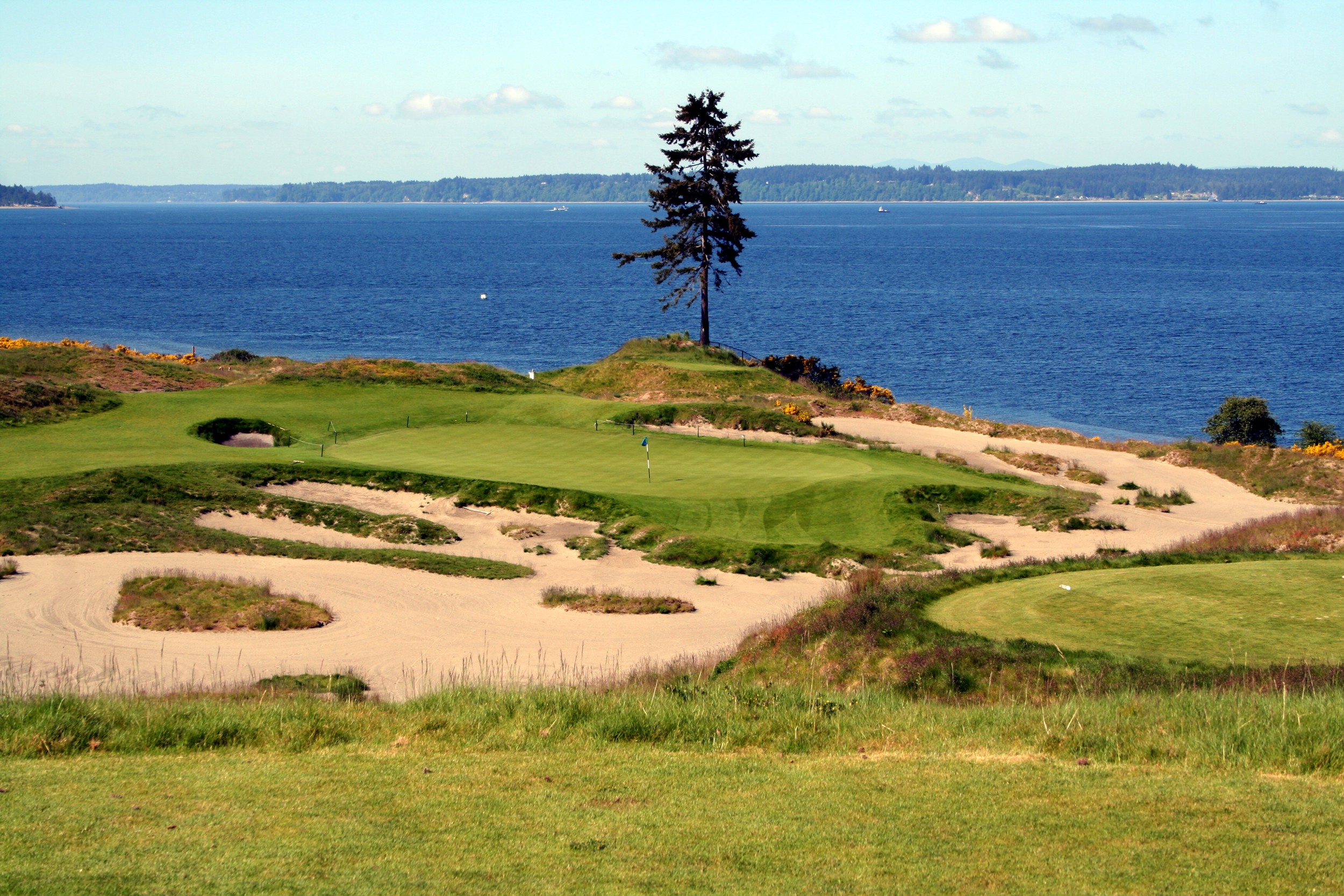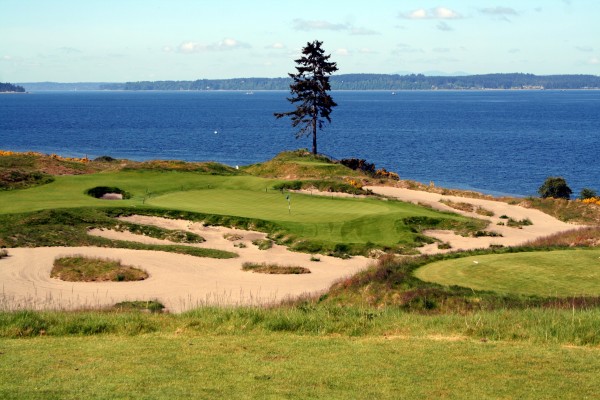The top golfers in the world assemble this week at Chambers Bay for the115th U.S. Open, yet they are not the story.
Sure, one player might elevate himself above the rest before the week is out.
Johnny Miller did that in 1973, when he closed with a 63 to win the national championship at Oakmont.
Or the dominant figure might be a tragic non-winner like Greg Norman, who finished second in three Grand Slam events in 1986, among other major disappointments; Phil Mickelson, who has finished second in the U.S. Open six times, or Arnold Palmer, who never won the PGA Championship.
Mickelson’s quest for his first U.S. Open title this week to complete the career Grand Slam should be getting more play than it is, but much of the buzz is about Chambers Bay Golf Course in University Place, Wash., the third municipal course to host the tournament.
It is nothing new for a golf course to be the star of a major championship, whether it be the treacherous beauty of Augusta National, the historic nuances of the Old Course at St. Andrews, the confluence of land and water at Pebble Beach, the winds at Carnoustie or the bunkers at Whistling Straits.
However, this is something a little different. It is not only Chambers Bay but Mike Davis’ image of the course, which sits above the Pacific Ocean about 45 minutes south of Seattle.
Davis has for several years been in charge of setting up the courses for the United States Golf Association’s major events, and when the USGA asked him to take the title of executive director in 2011, he did so only so he could continue as the setup man.
So U.S. Opens these days are what Davis wants them to be.
There has been grumbling from some of the pros about Davis’ work, even last year, when the stars of the LPGA Tour were excited to be playing the Women’s U.S. Open for the first tile at Pinehurst No. 2 but not thrilled with what the course would look like a week after the men chewed it up.
As it turned out, playing the tournaments back-to-back on the same course went off without major problems, but this year Davis raised the hackles of some PGA Tour players when he tried to tell them how to prepare for Chambers Bay.
“The idea of coming in and playing two practice rounds and having your caddie just walk it and using your yardage book, that person’s done,” Davis said. “Will not win the U.S. Open. …
“My point is, we’ve seen a trend where golfers are coming and lot of them play nine holes a day and do it for two days. In the old days, they’d come in and play three or four rounds. And they’re not doing that anymore for different reasons.”
The reaction of the pros was swift and harsh, for the most part.
If what Davis said is true then Rory McIlroy, the No. 1 player in the World Golf Rankings, has no chance this week.
“What’s Mike Davis’ handicap?” responded McIlroy, who won the U.S. Open in 2011 at Congressional. “With the way the tour is (these days), no one is going to go out there and play 10 practice rounds.”
Webb Simpson, who won the 2012 U.S. Open at the Olympic Club, said with more than a touch of sarcasm: “We’ll play for second.”
Ian Poulter of England hadn’t yet played Chambers Bay, but he tweeted: “The reports back (from pros who had) are it’s a complete farce. I guess someone has to win.”
Tiger Woods said the course could be brutal, “depending on how it’s set up,” and Mickelson said it was more like a links venue for the Open Championship rather than a U.S. Open, although neither was critical of Davis.
Davis has talked about giving the players tee shots from uneven lies on the sloping landscape at Chambers Bay, and he said the first and 18th holes could play both as par 4s or par 5s during the tournament, something unheard of in major championship golf.
The USGA and the PGA Tour have had an uneasy relationship before. After Miller became the first player to shoot 63 in a major, the 1974 U.S. Open was won by Hale Irwin at 7 over par in what became known as the “Massacre at Winged Foot.”
Sandy Tatum, former USGA president, said famously at Winged Foot: “We’re not trying to embarrass the best players in the world. We’re trying to identify them.”
The USGA always has been very protective of par, so often the winner of the U.S. Open is the last man standing, the lone survivor.
What will happen this week is still anyone’s guess. And that’s the story.
–Story courtesy of The Sports Xchange, TSX Golf Editor Tom LaMarre


